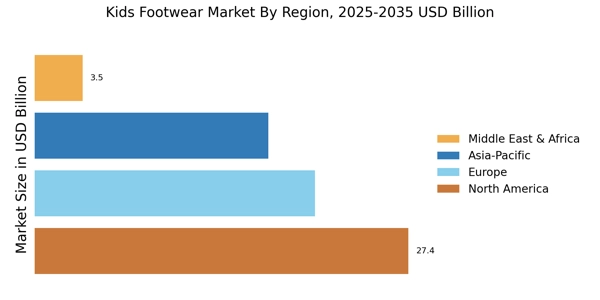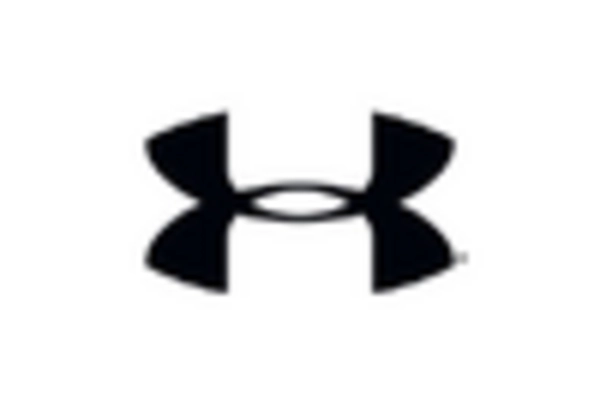The Kids Footwear Market is currently characterized by a dynamic competitive landscape, driven by innovation, sustainability, and digital transformation. Major players such as Nike (US), Adidas (DE), and Skechers (US) are actively shaping the market through strategic initiatives that emphasize product differentiation and consumer engagement. Nike (US) continues to leverage its strong brand equity by focusing on sustainable materials and innovative designs, while Adidas (DE) is enhancing its market presence through collaborations with popular children's brands, thereby appealing to a younger demographic. Skechers (US) is also making strides by expanding its product lines to include eco-friendly options, which resonates with the growing consumer demand for sustainability in children's products.
The business tactics employed by these companies reflect a moderately fragmented market structure, where localizing manufacturing and optimizing supply chains are pivotal. Companies are increasingly investing in regional production facilities to reduce lead times and enhance responsiveness to market demands. This strategy not only mitigates risks associated with global supply chain disruptions but also allows for greater customization of products to meet local preferences. The collective influence of these key players fosters a competitive environment that encourages innovation and responsiveness, ultimately benefiting consumers.
In August 2025, Nike (US) announced the launch of its new line of kids' footwear made entirely from recycled materials, marking a significant step towards its sustainability goals. This initiative not only aligns with the growing consumer preference for eco-friendly products but also positions Nike as a leader in sustainable practices within the kids' footwear segment. The strategic importance of this move lies in its potential to attract environmentally conscious consumers and enhance brand loyalty among parents seeking sustainable options for their children.
Similarly, in September 2025, Adidas (DE) unveiled a partnership with a popular animated children's series to create a limited-edition footwear collection. This collaboration aims to tap into the emotional connection children have with their favorite characters, thereby driving sales through brand affinity. The strategic significance of this partnership is evident in its ability to create buzz and excitement around the product launch, potentially leading to increased market share in the competitive kids' footwear sector.
In October 2025, Skechers (US) revealed its plans to expand its retail footprint in emerging markets, particularly in Southeast Asia. This expansion strategy is indicative of Skechers' commitment to capturing new consumer segments and enhancing its global presence. By entering these high-growth markets, Skechers aims to leverage the increasing demand for quality children's footwear, which is expected to drive revenue growth in the coming years.
As of October 2025, the competitive trends in the Kids Footwear Market are increasingly defined by digitalization, sustainability, and the integration of artificial intelligence in product development and marketing strategies. Strategic alliances, such as collaborations between brands and popular media franchises, are shaping the landscape by creating unique consumer experiences. Looking ahead, competitive differentiation is likely to evolve from traditional price-based competition to a focus on innovation, technology, and supply chain reliability, as companies strive to meet the changing preferences of consumers in a rapidly evolving market.


















Leave a Comment